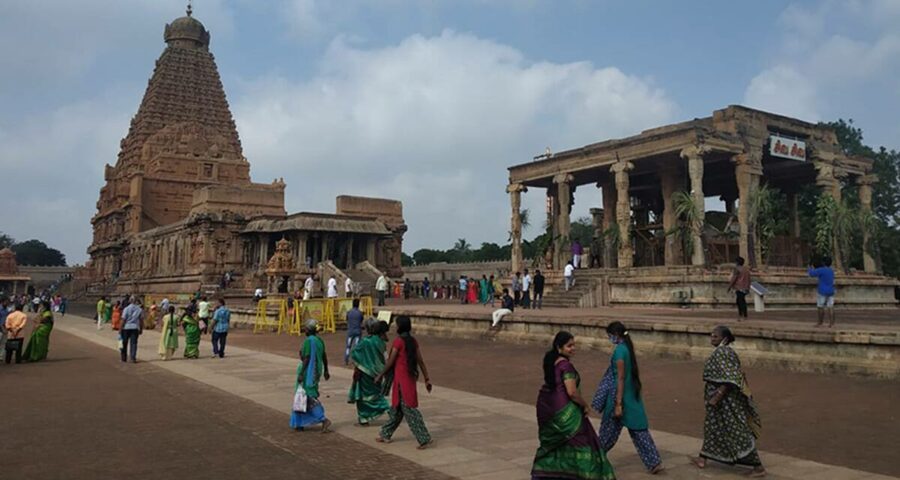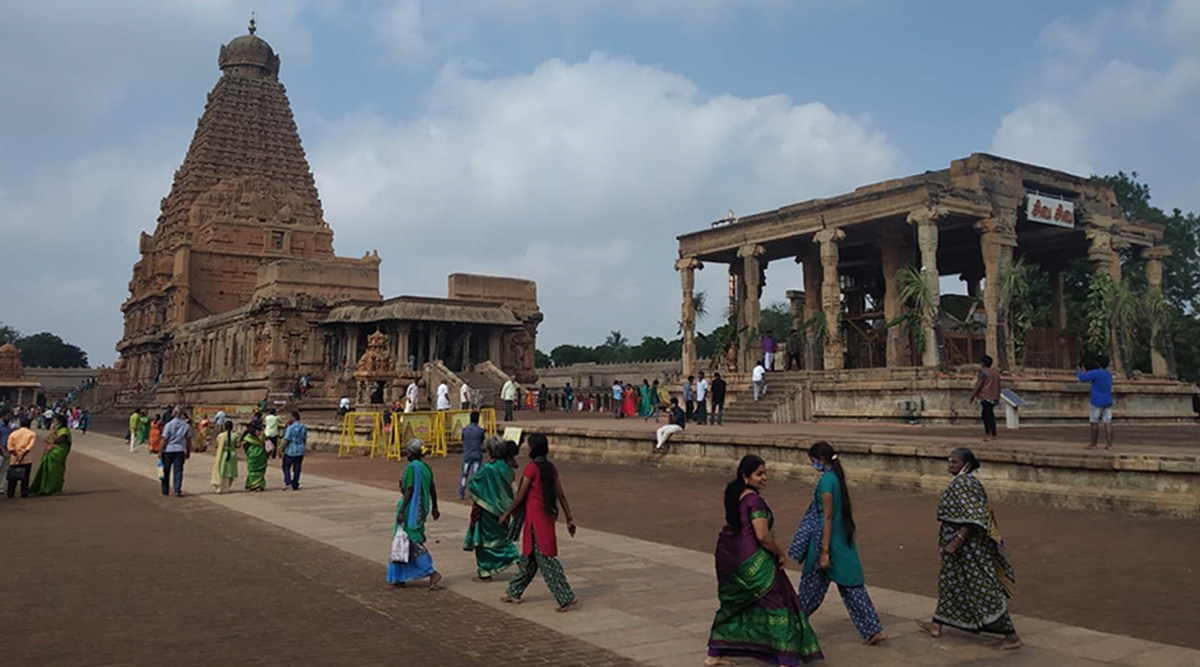Pratap Bhanu Mehta writes: Not just social engineering, there are good religious grounds for opening all ritual functions to women. The rest of India must follow Tamil Nadu’s example
Get email alerts for your favourite author. Sign up here
Tamil Nadu Hindu Religious and Charitable Endowments Minister PK Sekar Babu’s remark that women could be appointed priests in the 35,000-odd temples in the state is long overdue. This transformative idea must be emulated in temples across the country. There are, properly speaking, no religious obstacles for doing so. What stands in the way is the dead hand of convention, the power of patriarchy, and politics.
The term “priest” denotes a vast range of social, ritual and redemptory functions: From purohits to pandas, to being a medium of divine power. Women have performed many of these. These functions are also embedded differently in different Hindu traditions: Sakta, Saivism, and Vaishnavism, Smarta etc. There are several examples in Tamil Nadu, Maharashtra where women perform all rituals. Often, priesthood was an inherited office. In Raj Kali Kuer vs Ram Rattan Pandey 1955, the Supreme Court held that women have the right to succeed to religious office. It ruefully noted that standard codifications like Digest of Hindu Law on Contracts and Successions: With a commentary by Jagannatha Tercapanchanana, disqualified women from performing certain ritual functions. But it held that this disqualification was not sufficient grounds to deny them priestly office. This judgment notes that many priestly offices in Indian temples were hereditary, and “hereditary is not a principle of competence.” In many temples, priestly office-holders subcontracted particular ritual functions when needed. So even if women could not participate in particular rituals, that could not be grounds for denying them priestly authority.
But despite these precedents, participation of women in temple authority structures or ritual processes is shockingly rare. There are two obstacles: The fear of women coming in contact with men, and notions of purity and pollution, especially associated with menstruation. Again, there is a complexity. The social bases of the temples matter. This principle also operates differently in what are called Agamic or Shastric temples, versus non-Agamic temples. In temples with Tantric traditions, both Kashmiri and South Indian, women can perform forms of worship prohibited elsewhere, even though there are some restrictions. But historically, the Shaligram Shila Puja was the lakshman rekha that could not be crossed; even non-menstruating women could not touch the Shila. Overcoming this taboo is a tall order, as we just saw in the Sabarimala case. But the taboo must go.
The purpose of opening up ritual functions to women cannot just be social engineering; there are good religious grounds for opening all ritual functions to women. The textual tradition always leaves room for ambiguity; whether there were prohibitions in Vedic texts is debated. Some foreground Bhakti inflected verses, like Srimad Bhagvad, 11.27, 3-4, where Brahma tells Bhrigu that worshipping in deity form is the most beneficial of all spiritual practices, for women and Sudras. They argue that this sentiment should override other prohibitions. But the basic point is this. The authority of men, or of Brahmins, to conduct rituals is not literally vested in their bodies. This authority is created through a liturgy of signs and symbolic substitutions. They are not pure or worthy. They are made pure or worthy through ritual. There is no reason why anyone cannot be made worthy in this sense.
The single biggest achievement of the Bhakti movement was to marginalise ritual conformism, and exalt the dignity of the emotion of the bhakt. Why should dignity be marginalised by the constraints of the body or the conformism of the ritual? Opening up all modes of worship, including the inner sanctum ritual to all people is completing the Bhakti revolution that has been resisted by the last vestiges of social Brahmanism.
Finally, there is a metaphysical point that can be best illustrated by invoking the most significant moment in the Mahabharata: The Janaka-Sulabha samvad. That dialogue is often read as Sulabha, the great yogini, puncturing King Janaka’s pretensions to have attained moksha. In the process, she also questions the binary of gender distinctions. But the most significant point is that Janaka’s being in thrall to the distinction between man and woman is a reflection of his kaama desire. The fact that he sees the world in gendered terms is a sign of his attachment, his failure. Let the temple rituals not socially enact our failures, our attachments, our being limited by our bodies or birth, if they are to be the true gateways to something higher.
The politics around a large-scale transformation of temple authorities is fraught. It will disrupt the existing franchises over ritual power that have been monopolised. There is the tricky question of whether the state should interfere with temple rituals. Some Hindu circles murmur that it is an atheistic DMK reforming temples. This is to misunderstand the historical role DMK has performed in saving Hinduism. This issue is compounded by the fact that any reform process is hostage to communal politics. Why should Hindu practices be interfered with if no equivalent obligations are being put on other religions — on Catholicism, for ordaining women priests, for example? Why should the authority of the state be asymmetrically applied? But remember, this is not about a secular state interfering in religious practices. It is about Hindus reforming their own practice, through their own institutions which, in southern states, happen to be things like endowments departments. One hopes that all other religions also, through their institutions, liberate religion from patriarchy. But it is nonsense to say that a community is being victimised if it chooses to reform, or that reform has to wait for every community to rouse itself.
In the use of “Sulabha” are two big cosmic jokes in the Indian context. One, mundanely, is in the context of toilets, where Sulabha Shauchalaya was a reminder of just how rare access to the conditions of a dignified discharge of a natural function is in India. The other is Vyas, naming the single most accomplished yogini in the Indian tradition, Sulabha. Sulabha is the one who has truly transcended the prison house of the body, of attachment and of ignorance.
There is nothing Sulabha about attaining this state. Hinduism will do itself a favour by emulating Sulabha and throwing off the needless restrictions that divide and exclude. Giving women full rights on all temple rituals is an idea whose time has come.
This column first appeared in the print edition on June 22, 2021 under the title ‘Sulabha’s descendants.’ The writer is contributing editor, The Indian Express
Source: Read Full Article




